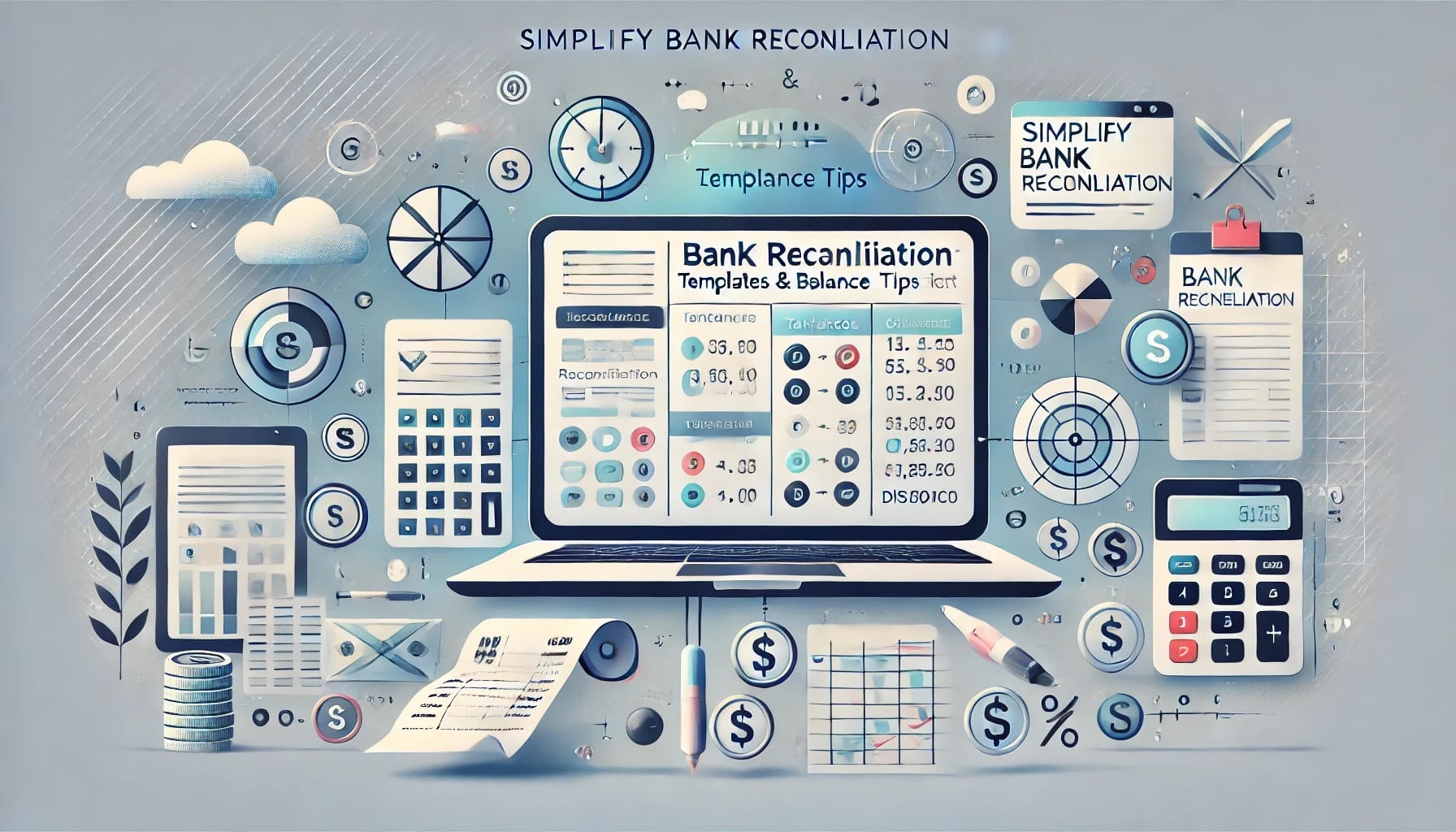Simplify Bank Reconciliation: Templates & Balance Tips
Learn how to perform bank reconciliation with our step-by-step guide and free templates. Ensure accurate financial records and detect errors effortlessly.

In the world of business, maintaining accurate financial records is not just a best practice—it’s a necessity. One of the most critical aspects of financial management is bank reconciliation, a process that ensures your company’s financial records align with your bank statements. Discrepancies between these two can lead to errors in financial reporting, missed payments, or even fraud. For businesses of all sizes, bank reconciliation is a cornerstone of effective accounting.
A Bank Reconciliation Template simplifies this process by providing a structured framework to compare your company’s ledger with your bank statement. It helps identify discrepancies, track outstanding checks, and ensure that all transactions are accurately recorded. Whether you’re a small business owner or a seasoned accountant, using a bank reconciliation template can save time, reduce errors, and provide a clear picture of your financial health.
This comprehensive guide will walk you through everything you need to know about bank reconciliation, from its definition and benefits to step-by-step instructions on how to perform it. We’ll also provide free, downloadable templates to streamline your reconciliation process and ensure your financial records are always accurate and up-to-date.

What is Bank Reconciliation?
Bank Reconciliation is the process of comparing your company’s financial records (ledger) with your bank statement to ensure they match. This process helps identify discrepancies, such as missing transactions, errors, or unauthorized withdrawals, and ensures that your financial records are accurate and up-to-date.
Bank reconciliation is typically performed monthly, but businesses with high transaction volumes may do it more frequently. It’s a critical step in maintaining financial integrity and ensuring that your business’s cash flow is accurately reflected.
Key Terminology in Bank Reconciliation
Before diving into the reconciliation process, it’s essential to understand some key terms:
- Deposits in Transit: These are deposits made by your company that have not yet been recorded by the bank. This often happens when deposits are made late in the day or close to the bank’s cutoff time.
- Outstanding Checks: Checks issued by your company that have not yet been cashed or cleared by the bank. These checks are recorded in your ledger but not yet reflected in your bank statement.
- NSF Checks (Not Sufficient Funds): Checks that cannot be processed because the issuer’s account lacks sufficient funds. These must be recorded in your ledger to avoid discrepancies.
Benefits of Bank Reconciliation
1. Ensuring Accurate Financial Records
Bank reconciliation helps ensure that your financial records match your bank statements, reducing the risk of errors in financial reporting.
2. Detecting Errors and Fraud
By regularly reconciling your accounts, you can quickly identify discrepancies, such as unauthorized transactions or bank errors, and take corrective action.
3. Simplifying Tax Reporting
Accurate financial records make it easier to prepare tax returns and ensure compliance with tax regulations.
4. Improving Cash Flow Management
Bank reconciliation provides a clear picture of your cash flow, helping you make informed financial decisions and avoid overdrafts or insufficient funds.
How to Perform Bank Reconciliation
Step 1: Check the Closing Balance from the Previous Month
Start by reviewing the closing balance from the previous month’s reconciliation. This balance serves as the starting point for the current reconciliation.
Step 2: Add Deposits Not Yet Cleared and Deduct Outstanding Checks
Add any deposits in transit and deduct outstanding checks from your ledger. This will give you an adjusted balance that reflects transactions not yet recorded by the bank.
Step 3: Add Interest Earned and Deduct Bank Fees
Include any interest earned on your account and deduct bank fees or service charges. These adjustments ensure that your ledger reflects the true balance.
Step 4: Compare Deposits and Withdrawals with Bank Statements
Compare the transactions in your ledger with those on your bank statement. Ensure that all deposits, withdrawals, and fees match.
Step 5: Investigate and Resolve Discrepancies
If you find discrepancies, investigate their source. This could involve checking for errors in your ledger, contacting the bank, or reviewing outstanding checks and deposits.
Free Bank Reconciliation Templates
1. Monthly Bank Reconciliation Template
This template is ideal for monthly reconciliations and includes sections for deposits in transit, outstanding checks, and adjusted balances.
2. Simple Bank Reconciliation Template
A straightforward template for businesses with fewer transactions. It includes columns for dates, amounts, and transaction descriptions.
3. Bank Reconciliation Statement Template
This template provides a detailed reconciliation statement, including opening and closing balances, deposits, and withdrawals.
4. Prepared Banking Reconciliation Statement
A comprehensive template that automatically calculates adjusted balances and highlights discrepancies.
Best Practices for Bank Reconciliation
- Regular Reconciliation: Perform bank reconciliation at least monthly to ensure accuracy and detect issues early.
- Use of Accounting Software: Automate the reconciliation process with accounting software to save time and reduce errors.
- Documentation and Record-Keeping: Maintain detailed records of all transactions and reconciliation activities for future reference.
- Training and Collaboration: Ensure that your team is trained in the reconciliation process and collaborates effectively to resolve discrepancies.
Conclusion
Bank reconciliation is a vital process for maintaining accurate financial records and ensuring the financial health of your business. By regularly reconciling your accounts, you can detect errors, prevent fraud, and make informed financial decisions.
Using a Bank Reconciliation Template simplifies this process, providing a structured framework to compare your ledger with your bank statement. Whether you’re a small business owner or a seasoned accountant, these templates can save time, reduce errors, and ensure that your financial records are always accurate.
Implement the best practices outlined in this guide, and make bank reconciliation a regular part of your financial routine. With the right tools and approach, you can maintain control over your finances and drive your business toward long-term success.
Source: Bank Reconciliation Template - Learn How to Match Account Balances
Don’t forget to explore our previous post: Improve Employee Skills & Development with a Training Plan Template





